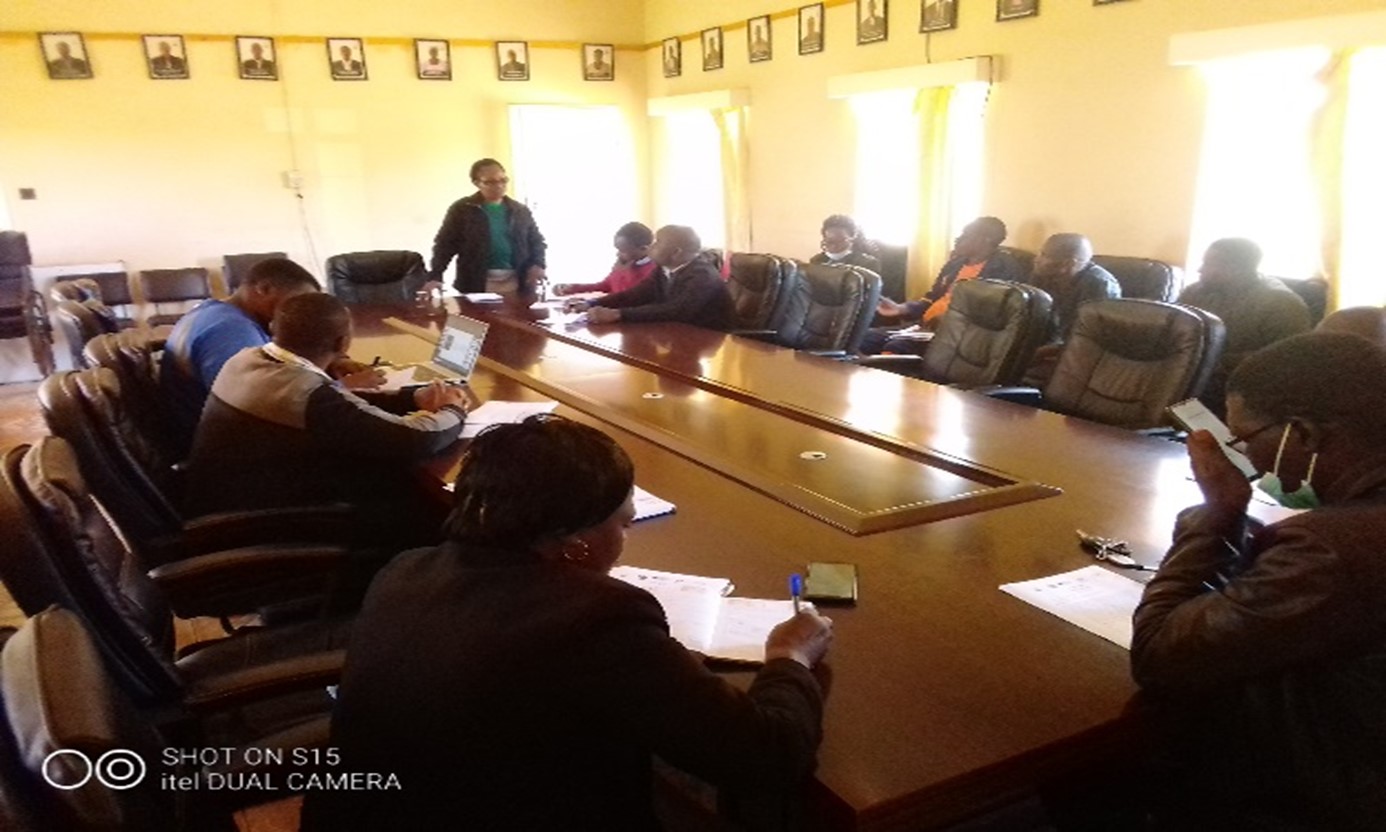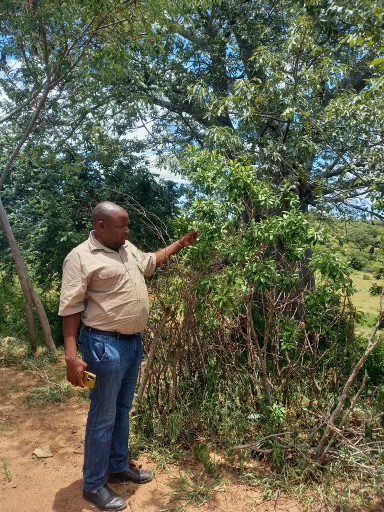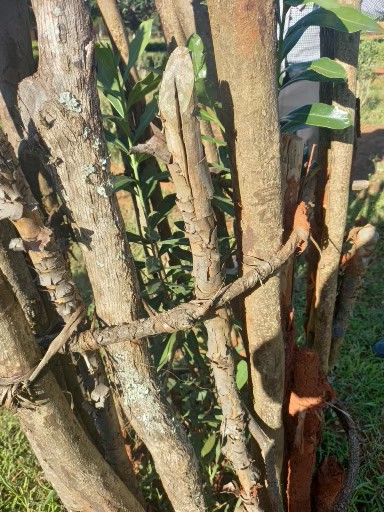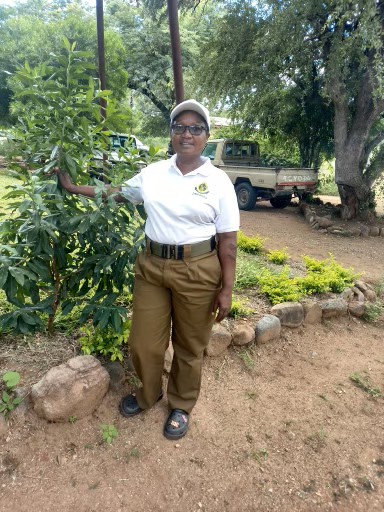Warburgia salutaris re-introduction project, Zimbabwe

-
Status of project
Completed -
Programme
BGCI -
Workstream
Saving Plants -
Topic
Services for Botanic Gardens
Funded by the Global Botanic Garden Fund
Project Completed: 2023
Institution: Vumba Botanical Gardens
Bringing back Warburgia salutaris in Communities
Bringing Back Warburgia salutaris in Communities, is a wild plant re-introduction project. W. salutaris is a herbal medicinal plant which is highly used by the local people of Chipinge district in Manicaland Province, Zimbabwe. The herbal tree is used to treat different types of human health ailments, including headaches, respiratory problems, muscle pains and more. W.salutaris is endangered at global level and is extinct in the wild in Zimbabwe.
Vumba Botanic Garden raised 435 seedlings from 2018 and distributed the seedlings for planting by communities and schools in November 2022. In 2023 the botanic garden raised 250 seedlings from cuttings and distributed them again to some of the community members who showed interest in the re-introduction project.
The first aim of this objective was to provide understanding of the importance of W.salutaris, benefits to community livelihoods and highlight the dangers of ignoring such an important plant species in Zimbabwe. Meetings and workshops were held to educate and raise awareness to school children, teachers and communities, so they could better understand the need to conserve W.salutaris.

The W.salutaris project team conducted stakeholder engagements – through different ministries, government departments and local leadership – to enhance the flow of information and allow a continuous interaction from top leadership to the communities. Engagement included Ministry of Education for schools, Local government heads, Ministry of Agriculture, Chairpersons of the traditional healers’ associations and herbalists.
The project team, through community representatives and the local leadership, conducted discussions, workshops and training sessions. Additionally, presentations were conducted in both primary and high schools, with some teachers and students suggesting the formation of conservation clubs at their schools, as a way of supporting their education syllabus in agricultural subjects.

The next phase of the project was to establish 6 W.salutaris plots (4 communities and schools; 1 at Vumba Botanic Gardens and 1 at Ewanrigg Botanical Gardens). The purpose of the target plots was to establish gene banks – which will remain as refence points in the future – and for conservation purposes. Schools and botanical gardens are protected areas which are rarely affected by natural disasters, theft and animal damage due to their location and availability of management resources. The team also considered the altitude as one of the factors that may affect the growth and survival of the planted W.salutaris. Vumba Botanic
Garden is located in higher altitudes of the eastern where temperatures are lower than the altitude and temperatures at Ewanrigg Botanic Gardens and National Botanic Garden where temperatures are a bit higher.
All willing members of the communities in Chipinge were issued with saplings of W.salutaris, and these were planted at their homesteads and vegetable gardens. At least 30 saplings were issued to target schools and each was issued with barbed wire and nails to protect the gene banks from livestock and vandalization. Non-target schools were also issued with at least 15 trees and had to protect the trees using natural material, with some having their premises being fenced with barbed wire provided by the school authorities. Hand out on how to plant and manage the planted saplings were issued to individuals and institutes in both local and English languages. School heads would ensure that the trees are watered at least once a week by students, and teachers from different schools were nominated to carry out the management of the plots.

The National Botanic Garden and Herbarium was issued with 7 trees for conservation in the botanic garden, with cameras and fencing fixed to guard against theft by visitors. This also applied to Zimparks and Ewanrigg Botanical Gardens which were issued with 7 and 5 trees respectively.
The project team established one of the country’s largest gene banks in the country by planting 100 W.salutaris saplings, which have shown to be successful. They also planted 5 trees per institute and Government institutions and heads of department were each issued with saplings as additional gene banks. Regular visits will be made to ensure continuity of the project, as this was critical to the investment of the organization (Zimparks).

As a result of the project, there is a positive demand for the W.salutaris from all corners of the province. Advocation continues to be conducted at events such as the district Agricultural show and expose. All the 6 plots were successfully established without challenges and have very healthy trees growing. The re-introduction of this species will reduce pressure from the current wild populations of the country. The gene bank on species collections has also been expanded as institutions and the government of Zimbabwe now have a referral point on recorded threatened species in protected areas of the country.
An estimation of over 1000 people have been supported through education and awareness campaigns and the distribution of W.salutaris. Cultivation of this species has become part of the communities’ agricultural activities which may in the long term allow healthy livelihoods among people.
According to the assessments, monitoring and evaluation of the project, 90% of the trees distributed and planted are thriving very well and adapting to the new environment. In some cases water was a challenge especially at Kaswa Primary school in Burmar valley but trees planted in low temperature regions like in Harare at the National Botanic Gardens and Ewanrigg Botanical Gardens have shown very high resistance to low temperatures and altitude. This means that W.salutaris can be cultivated as forests lands to support the indigenous livelihoods in marginalised areas of Chipinge district, as well as
isolated low lying areas in Zimbabwe.